Give us some info for your personalized offer
Seeing your website traffic down can feel discouraging, especially if you’ve been putting in a lot of effort and work. Now what?
The truth is, traffic drops happen. And while it may feel a little scary, it doesn’t mean you’ve messed things up. It just means something needs closer attention.
We’ve been through this ourselves, and the good news is there are things you can do to save the situation. It starts with understanding what might be causing the drop, then making a few smart changes.
This guide will help you figure out your next steps, based on real experience, not just theory.
A traffic drop happens when your website sees a noticeable decline in organic visitors over a specific timeframe, like a day, week, or month.
When we say “organic visitors,” we mean those who find your site by searching on Google or another search engine, not through paid ads or direct links.
The more organic traffic you get, the more chances you have to improve online visibility, authority, engagement, user experience, and conversions.
So, if you notice a sudden drop in traffic, it’s a sign that something is off. The faster you understand why, the quicker you can fix it and prevent bigger problems.
Drops in traffic usually result from a few common reasons. Let’s break them down.
Now that you know the possible reasons behind the traffic drop, let’s move on to exploring some tools that allow you to check and analyse website traffic.
There are two tools we use to check and analyze our organic traffic: Ahrefs and Google Analytics. Here’s a closer look at each with a simple walkthrough.
Ahrefs is a comprehensive SEO tool that allows you to check and analyze traffic.
However, it has its own traffic calculation system, so if you find that your Ahrefs and Google Analytics traffic are different, don’t be surprised.
Ahrefs shows an estimate of the search traffic of a website, whereas Google Analytics shows total traffic (direct, paid, social, etc). So, it’s normal for these two to show quite different numbers.
Even though Ahrefs shows an estimated number, it’s still a useful tool for understanding how well you are doing in terms of traffic compared to your competitors.
Here’s how to check your organic traffic.
Step 1: Type in your domain into the “Site Explorer” and click “Organic traffic.”

Step 2: Review which pages bring in the most traffic to your site.
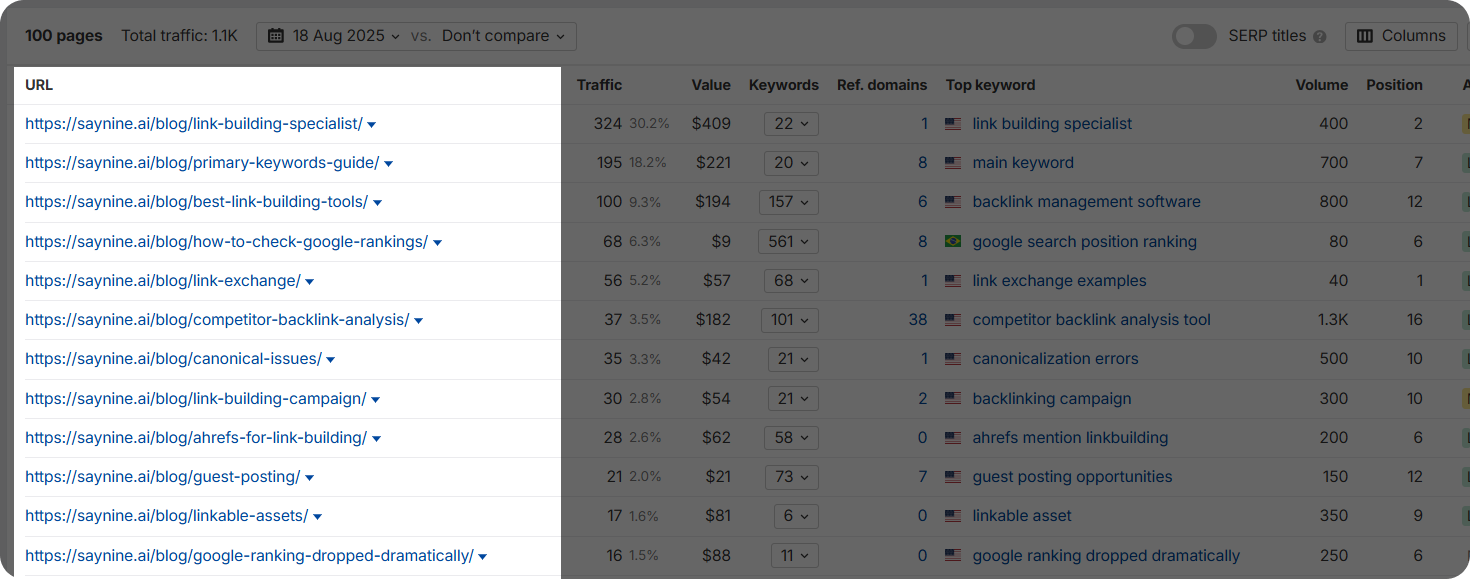
Step 3: Compare to a custom date to see how traffic has changed over time. You can also see keyword number changes.
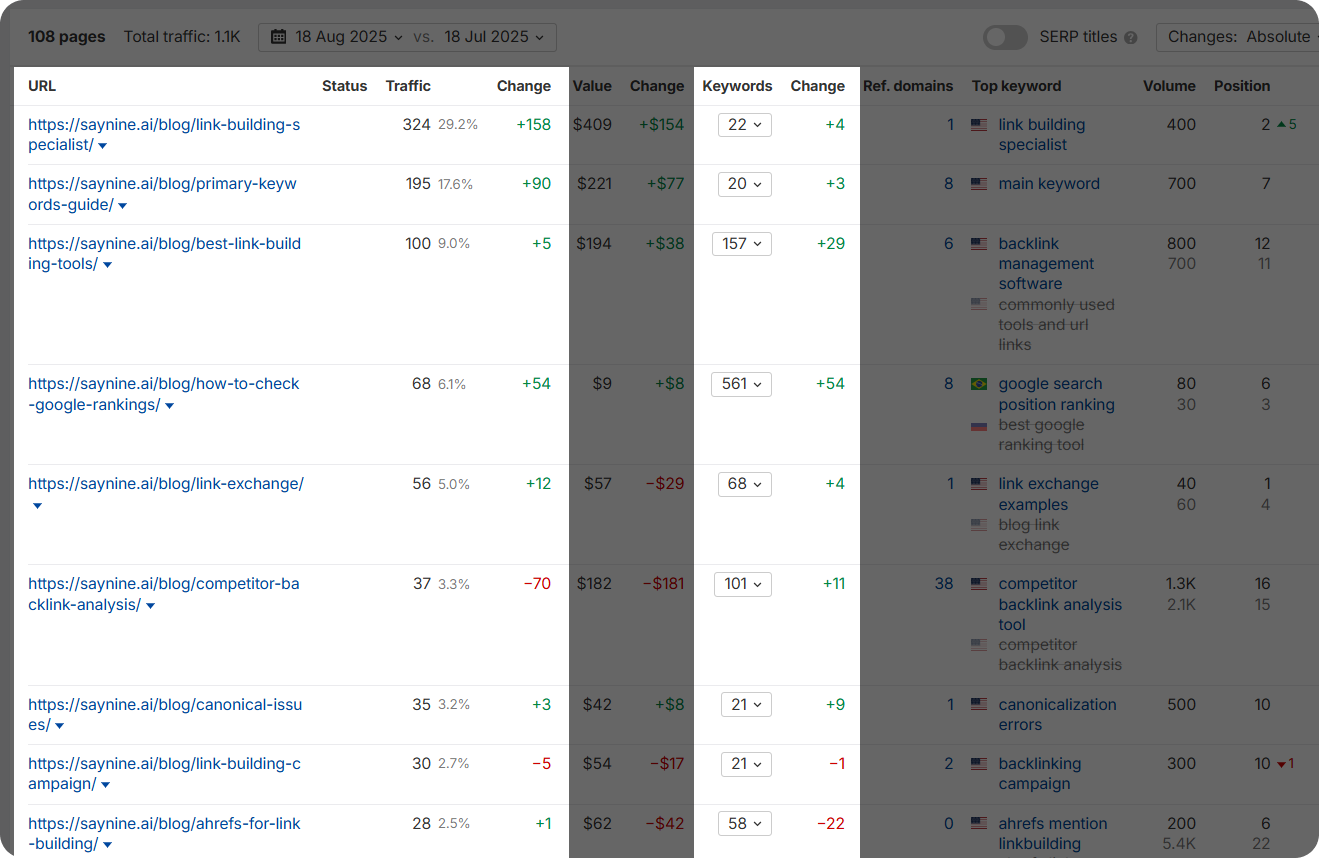
Step 4: Check all the keywords you’re ranking for. Maybe a few of them have dropped in position recently, which also could lead to noticeable traffic loss.
Now, let’s understand how to analyze SEO traffic with Google Analytics.
Google Analytics 4 is a free tool that allows you to easily check not only traffic but also what users do after they visit your site, like behavior, demographics, and more.
All you need to do is get an Analytics Property ID and add it to your site. It usually takes 24 hours for data to show up in Analytics.
Here’s how to find and analyze this data.
Step 1: Sign in to your GA4 an, and go to Reports > Acquisition > Traffic Acquisition.
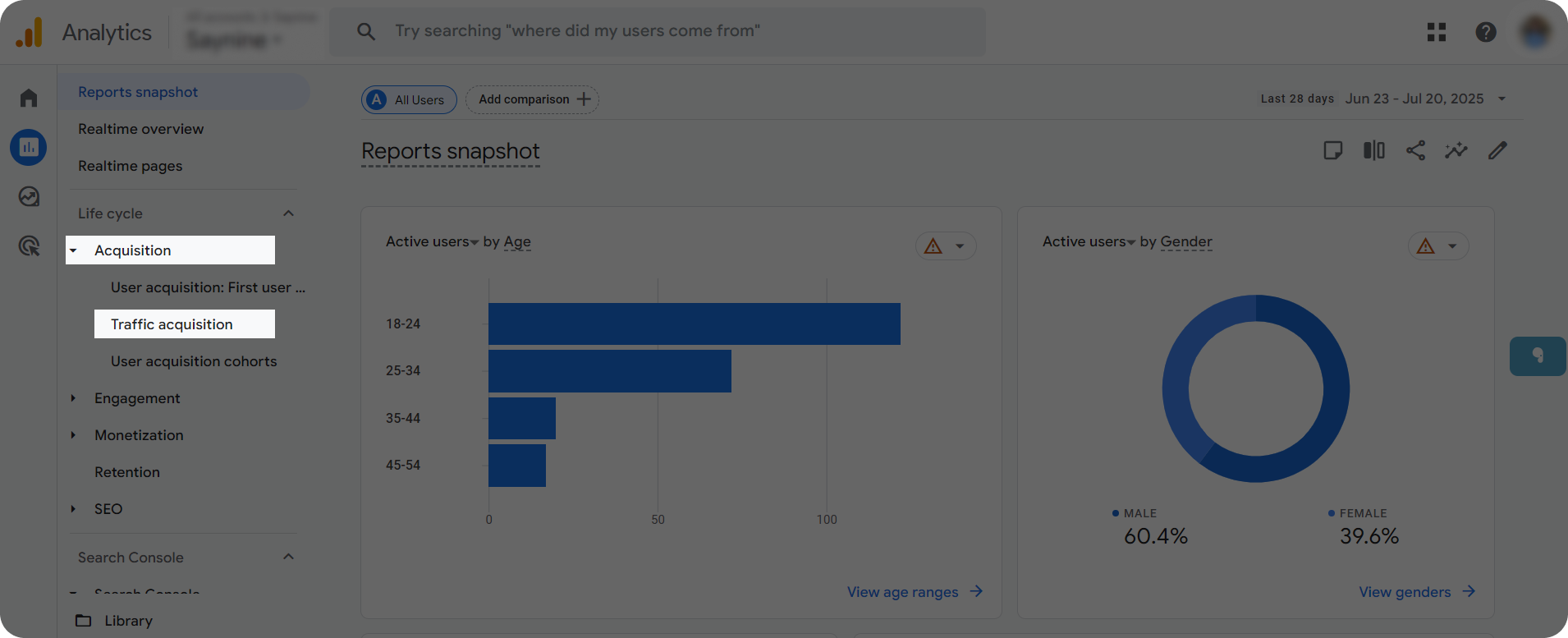
Step 2: Review the total number of sessions (which is the same as the total number of visitors) and sources your visitors are coming from (organic search, referral, direct, etc.).
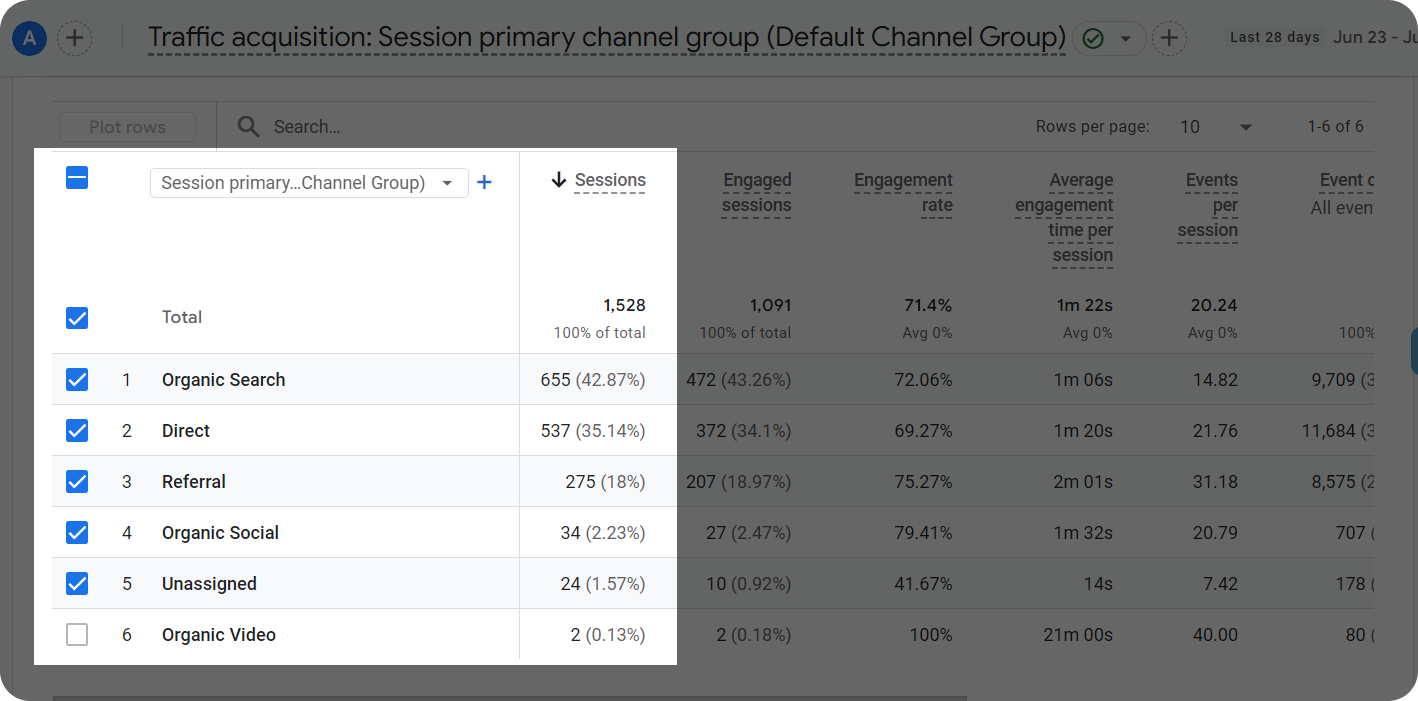
Step 3: If you want to check which pages on your site bring the most visitors and check some other engagement metrics, go to Report > Engagement > Pages and Screens NEW.
For example, here I typed /blog to get information about well-performing blogs.
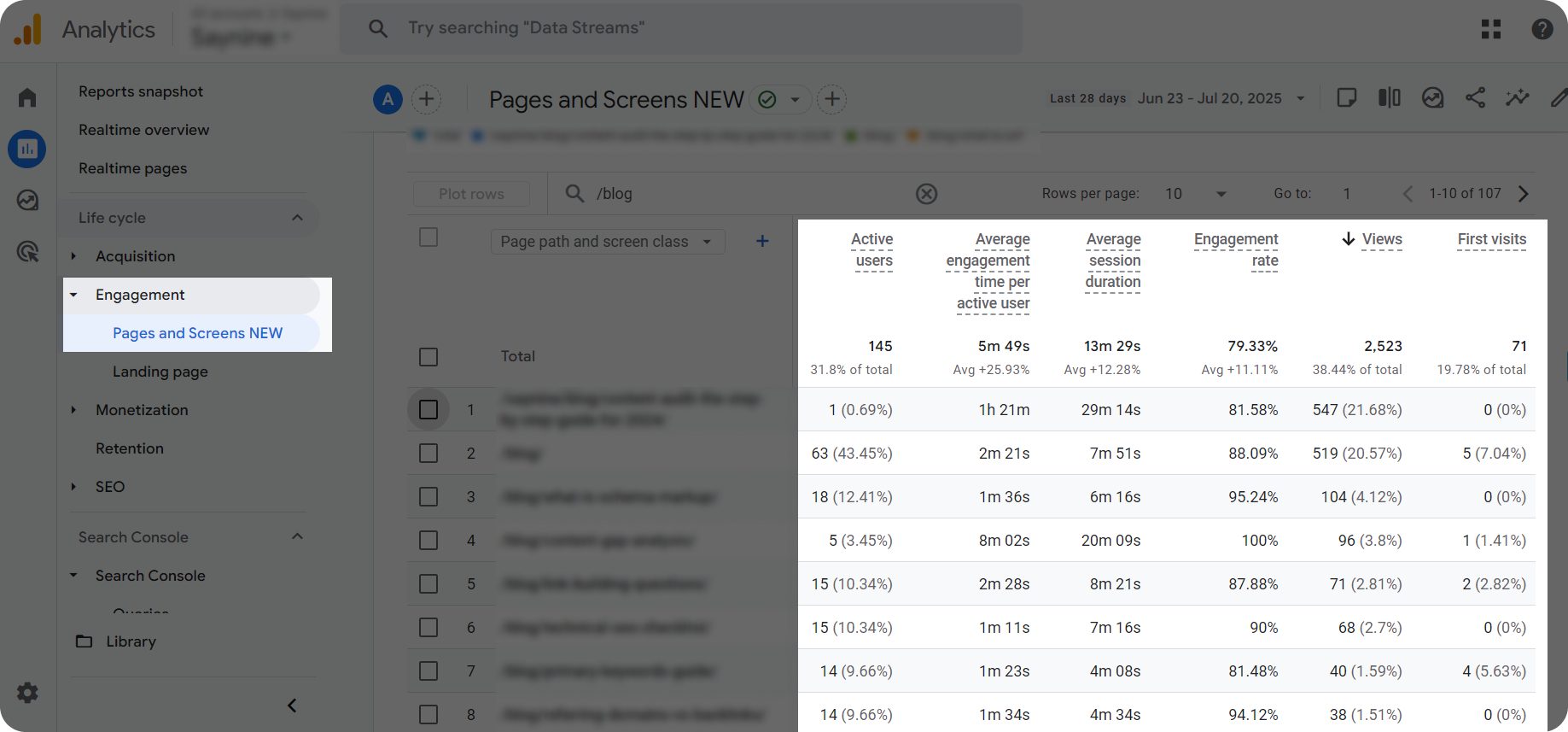
So, if you regularly check website traffic, you will get a basic understanding of whether your content is working or it’s time to change something.
If anyone understands the pain of going through the “website traffic down” phase, that’s us.
But that drop turned out to be one of the most valuable lessons we’ve learnt. Without it, we probably wouldn’t have taken a closer look at what wasn’t working.
It made us change our entire content strategy and build something more sustainable in the long run.
Now let’s talk about what actually happened and how we recovered.
We started actively working on our blog in 2022. By regularly publishing useful content, we reached almost 2,000 monthly organic traffic by June 2024. Things were going well.
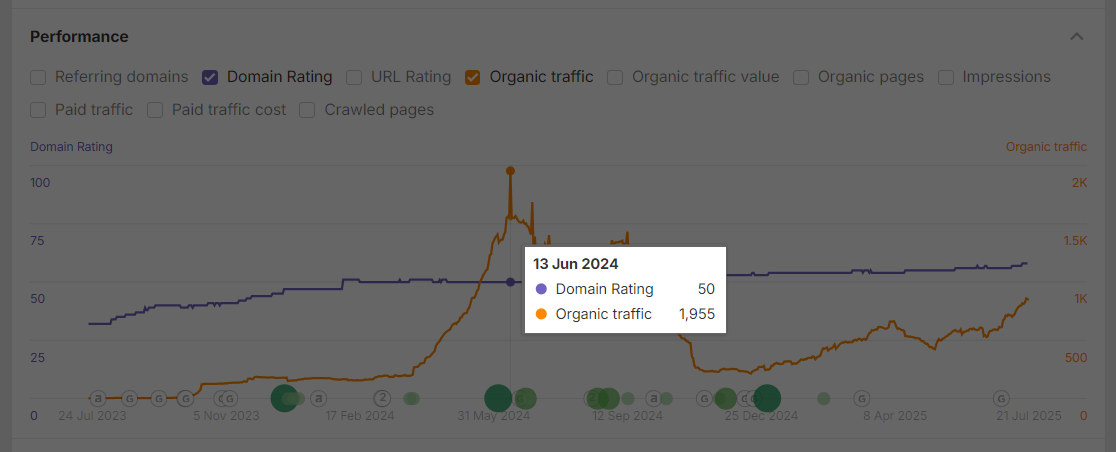
But then Google updates came, and our traffic started gradually decreasing.
By December 2024, our traffic dropped to just 218 visitors. It was discouraging, to say the least.

Thanks to our new strategy, we’ve achieved these numbers in just 7 months:

If you want to achieve similar results, we’re here to help. Want content that ranks and brings traffic? We have your back. Want non-shitty backlinks to push your content even further? We got you again.
Website traffic down? Don’t worry, even Google has bad days.
Track important data, fix what’s not working anymore, and get back to creating content that actually helps people. Traffic will improve eventually.
And if it’s not working, no matter how hard you try, contact us. We’re one call away.
Use tools like Google Analytics (GA4). Go to Reports > Acquisition > Traffic Acquisition to see if visitors come from organic search, social, direct, or referral sources.
Compare traffic before and after the drop using GA4 or Ahrefs. Check changes in top pages, keyword rankings, traffic sources, and look for technical issues or recent Google updates.
The more, the better. But it all depends on your industry and goals. Focus less on numbers, more on consistent growth and conversions.